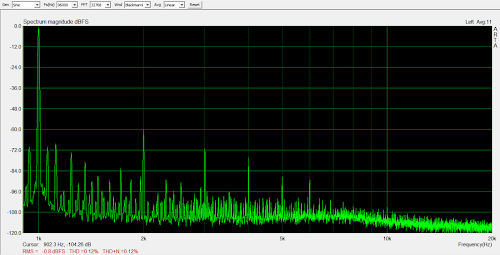What's the RCA 50W amp? See below:
It's a 50W push-pull amp with three nested feedback loops that apparently can do 50W@0.1% THD, which ain't too shabby. The innermost loop is parallel-applied voltage feedback from plate to grid of the output tube. Surrounding that is series-applied voltage feedback from plate of output tube to driver cathode. And then there is the global loop that goes from amplifier output to input tube.
I've always had mixed feelings about this amp. It has a lot done right, but my back-of-the-envelope calculations show that the ouput tube plate to driver cathode feedback can't be very effective due to the fact that the low impedance load at the plate of the driver spoils a lot of the potential driver gain. Driver cathode degeneration lowers gain further. I'm not even totally sure that it has more gain than the gain that is trying to be set with the resistor ratio that is there.
Anyway, I've been playing with output tube plate to driver cathode feedback and have been having exceptional results with high gain drivers. It makes me wonder what would happen if we fixed the RCA amp a bit and used series-applied voltage feedback around the output tube instead of parallel-applied feedback, so I decided to run with that idea and here is a simplified conceptual schematic:
I made the output tubes two KT88 UNSETs (UNPPTs?), which frees up the driver to use a very high impedance load and develop some serious gain. Oh yeah.
This is pretty similar to my driver for my recent 826 SE amp experiments, only I reversed the input and feedback connections to make the phasing correct for negative feedback. Bias on the 6BN11 stage is not very stable over time due to absurdly-high gain, so a bias servo is probably mandatory on that stage. Open-loop gain of that stage is ~2600. This provides a lot of feedback and I expect resulting driving impedance on the primary of the transformer will be somewhere between 10 and 20 Ohms. Using a Hammond 1650R (or something with similar low copper losses) will result in a Zout of ~0.5 Ohms or so. Distortion will be extremely low.
In my mind, at that point, global feedback is optional, so I have omitted it. It could be added back in with another gain stage. I also like input transformers for the immunity to ground loops that they offer so I included one. Obviously, I have omitted some necessary components such as stoppers, protection diodes, and something to tie input transformer secondary to some level other than what the leakage currents pull it to.
The UNSET output configuration offers the opportunity to share some of the idle dissipation between the mosfet and the power tube, so I have increased B+ to 530V. This still puts 450V across the output tubes like in the RCA amp, but now we can hit over 75W with the same class of output tube, and have plenty of idle current to keep idle output tube transconductance high.
I decided to pull the output tube plate to driver grid feedback network down near GND with a CCS. My intuition tells me that having a high AC impedance at this node would have a balancing effect on the amplifier. I'm not sure how well this would work (haven't simmed it or anything). The other option would be to ground the center point (maybe with a trim pot in the center to adjust out AC imbalances in the two halves).
Anyway, I think it would make a good amp that could make your ears bleed with low distortion.















